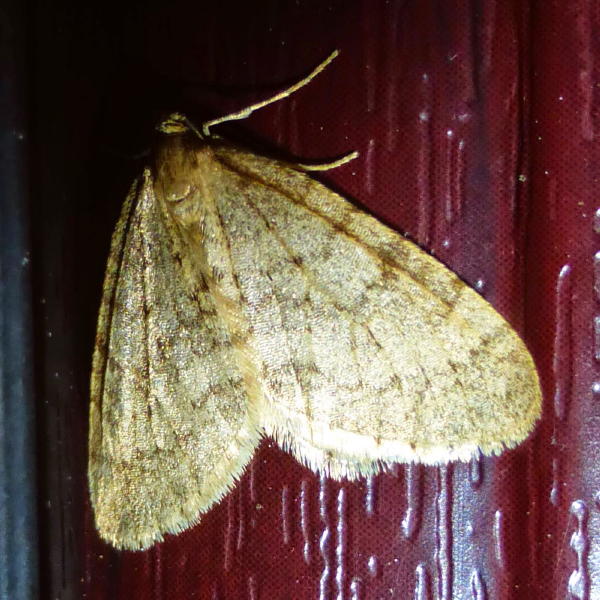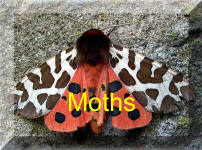ABH 70.106
1799 Winter Moth Operophtera brumata
BF 1799
Back To
(Linnaeus, 1758)
Phenology
JAN
FEB
MAR
APR
MAY
JUN
JUL
AUG
SEP
OCT
NOV
DEC
Family
Geometridae »
Larentiinae
Wingspan
22
- 28 mm.
Description
Unlike most moths
that are summer fliers the male Winter moth is on the wing Oct -
Jan in Gardens , Scrubland and Orchards. females are virtually
wingless, and crawl up tree-trunks to await the arrival of males.
The Winter Moth can be a pest in orchards,
Sitka spruce plantations and on heather moorlands
The caterpillar stage of the winter moth
feeds on the leaves, blossoms and young fruitlets during the spring.
The caterpillar weaves a silken thread loosely through the leaves
and the small holes made at this stage often go unnoticed. As the
leaves develop, the holes enlarge and become noticeable, but the
caterpillar has done damage by that stage and has gone back down
the tree into the soil to pupate into the fully grown winter moth
- they will emerge from the soil anytime between November and March.Orchard
control invloves tyining a large grease band around the trunk to
stop the females ascending truns to mate
Life Cycle
Habitat
The larvae feed on
a range of trees and shrubs, as well as moorland species such as heather
(Calluna). Sometimes the larvae occur in great numbers, reaching pest
status and occasionally completely Females are wingless and climb
tree trucks so they may mate and lay eggs . Caterpillars transfer
from tree to tree by wind on a silken thread. defoliating small trees.
Links
Images
IMAGE
COURTESY OF GORDON JACKSON (C) 2015

ABH 70.106 |
1799 Winter Moth Operophtera brumata |
BF 1799 |
|||||||||||||
|
|
|||||||||||||||
| Back To | (Linnaeus, 1758) |
||||||||||||||
|
|||||||||||||||
Phenology |
|
||||||||||||||
Family |
Geometridae » Larentiinae | ||||||||||||||
Wingspan |
22 - 28 mm. | ||||||||||||||
Description |
Unlike most moths that are summer fliers the male Winter moth is on the wing Oct - Jan in Gardens , Scrubland and Orchards. females are virtually wingless, and crawl up tree-trunks to await the arrival of males. The Winter Moth can be a pest in orchards, Sitka spruce plantations and on heather moorlands The caterpillar stage of the winter moth feeds on the leaves, blossoms and young fruitlets during the spring. The caterpillar weaves a silken thread loosely through the leaves and the small holes made at this stage often go unnoticed. As the leaves develop, the holes enlarge and become noticeable, but the caterpillar has done damage by that stage and has gone back down the tree into the soil to pupate into the fully grown winter moth - they will emerge from the soil anytime between November and March.Orchard control invloves tyining a large grease band around the trunk to stop the females ascending truns to mate |
||||||||||||||
Life Cycle |
|||||||||||||||
Habitat |
The larvae feed on a range of trees and shrubs, as well as moorland species such as heather (Calluna). Sometimes the larvae occur in great numbers, reaching pest status and occasionally completely Females are wingless and climb tree trucks so they may mate and lay eggs . Caterpillars transfer from tree to tree by wind on a silken thread. defoliating small trees. | ||||||||||||||
Links |
|
||||||||||||||
Images |
IMAGE COURTESY OF GORDON JACKSON (C) 2015
|
||||||||||||||
|
|
|||||||||||||||

